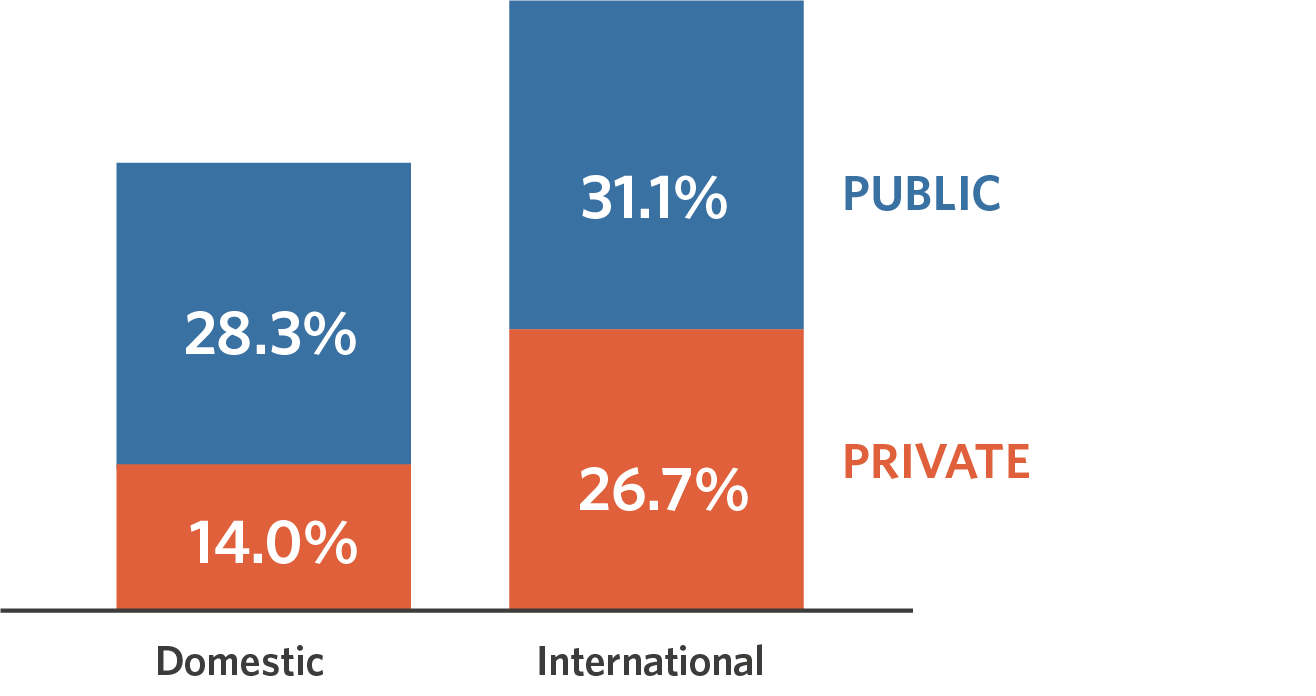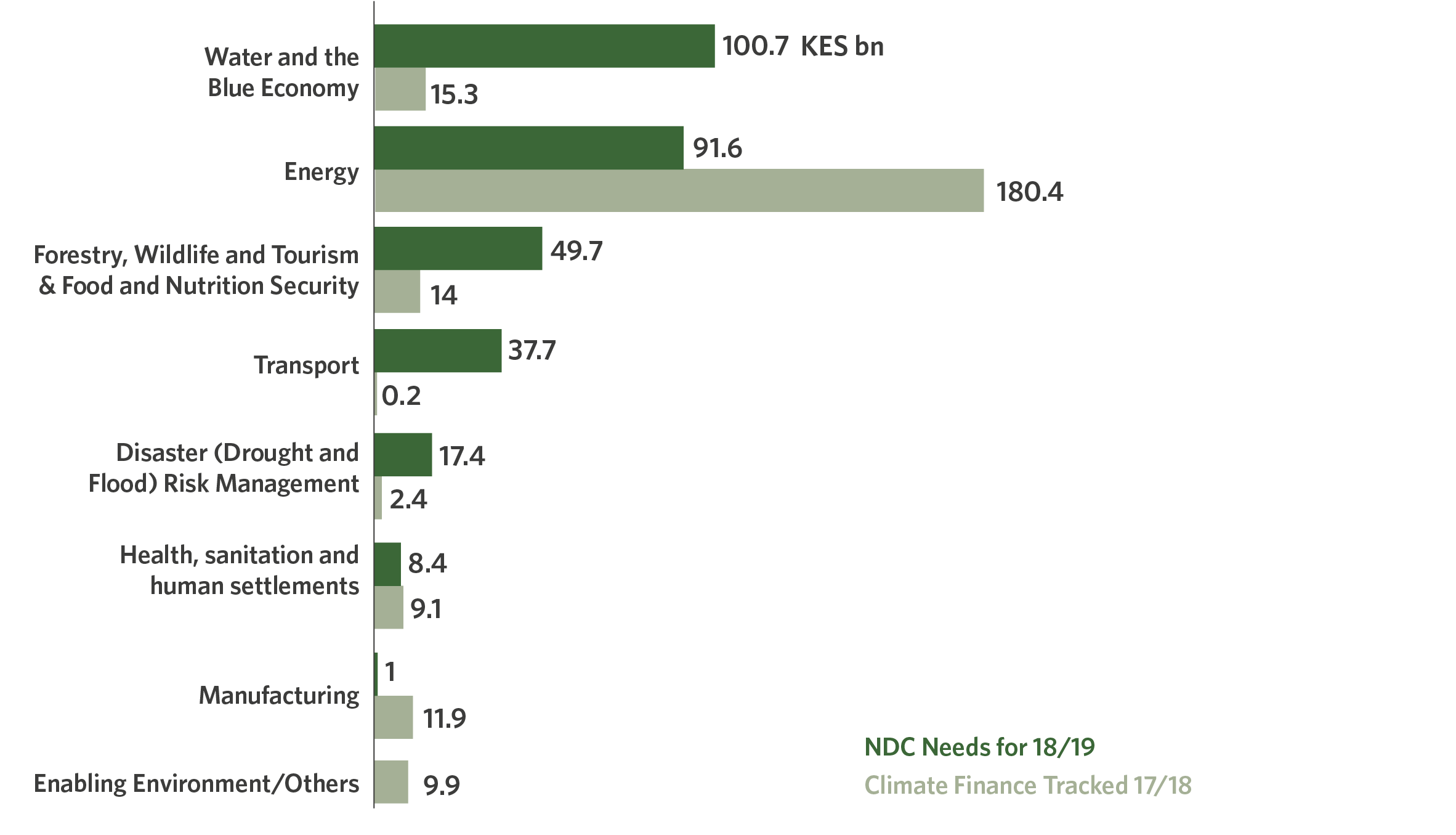Kenya is situated in the eastern part of Africa. It is world renowned for its dramatic landscape, rich blend of wildlife, and routinely adds to its gold deposits by crowding the top spot at global long distance running events. It also happens to be the region’s economic powerhouse (historically at least). Its exports comprise mostly of agriculture produce such as tea, coffee, and flowers. It has also shared the success of its mobile money transfer service, M-pesa, to as far as Afghanistan where it is known as M-paisa.
The developing nation is working towards becoming an industrialized nation and achieving the upper middle-income status by 2030. However, Kenya’s economy relies heavily on sectors such as agriculture and tourism (25% and 10% of Gross Domestic Product respectively), that are increasingly affected by climate changes and hampers her efforts towards middle-income status and industrialisation. Worse still, Kenya, like other developing nations, is disproportionately bearing the burden of climate change effects.
Kenya accounts for less than 0.1% of global Green House Gas (GHG) emissions and its per capita emission is less than half the global average; yet Kenya suffers disproportionately from climate related disasters. Such was the case during the 2014 – 2018 drought which pushed 3.4 million Kenyans (about 6% of the population) into severe food insecurity. Then, in 2018 floods destroyed 8,500 hectares of crop, drowned over 20,000 head of livestock, and displaced more than 230,000 people and 150,000 children. Down at Kenya’s coastline, the rising sea temperature and associated sea level rise could aggravate coastal erosion, augment saline intrusion, cause tidal flooding and inhibit coastal drainage. This is expected to impact up to 86,000 coastal dwellers a year by 2030. Already, climate related disasters lead to yearly economic losses estimated at 2%-2.8% of Kenya’s GDP. In the future this could worsen given Kenya’s is dependent on many climate sensitive sectors (largely agriculture). For example, take Kenya’s cut flower industry, a key foreign exchange earner which contributes about 1% of GDP and employs more than 500,000 people. It faces tough odds, in the form of prolonged cold weather periods, high temperatures in greenhouses, and heavy rainfall. Consequently, scheduled cutting to match demand on key dates such as Valentine’s Day is becoming ever more challenging. Unless mitigation and adaptation actions are taken to counter climate related challenges, such sectors are bound to suffer both domestically and in key export markets such as the United Kingdom.
“Kenya accounts for less than 0.1% of global Green House Gas (GHG) emissions and its per capita emission is less than half the global average; yet Kenya suffers disproportionately from climate related disasters.”
In responding to climate related challenges, Kenya has become a leader in policy action against climate change, developing its first National Climate Change Response Strategy (NCCRS) in 2010 and a National Climate Change Action Plan (NCCAP) in 2013. Building on this, Kenya submitted an ambitious Nationally Determined Contributions (NDC) at the 2015 Paris Climate Summit. The NDC detailed the mitigation and adaptation priority actions which would reduce GHG emissions by 30% by 2030 relative to the business-as-usual scenario. But submitting NDC’s is one thing, financing them is another. In 2018, Kenya estimated it would need USD 18.3 billion for the 2018-2022 period (equivalent to USD 4.6 billion per year). These estimates were adjusted upwards to USD 62 billion for the 2020-2030 period (equivalent to USD 6.2 billion per year) in the revised NDC, submitted to the UNFCCC in December 2020. To implement its NDC, Kenya would not only require financial assistance but the best available policy, technical, governance, and legal expertise to facilitate technology development and transfer, and capacity building.
In that regard and to get a better understanding of climate finance flows in Kenya, the National Treasury partnered with Climate Policy Initiative, the lead partner of the GNIplus program. Together, they analyzed the 2018 climate finance flows from domestic and international sources (both public or private) to examine which sectors were receiving support, and ultimately whether it was aligned with the climate ambitions and needs of Kenya. The report that followed highlights the following key highlights.
- Only USD 2.4 billion was invested in climate-related activities in 2018; less than half of the financing that Kenya needed annually to meet her NDC targets. (See Figure 1)
- Much of the climate finance (almost 80%) flowed to mitigation efforts such as expansion in renewable energy. So much so that Kenya has the highest electrification rate in East Africa and is now a global leader in use of geothermal energy, ahead of countries such as Japan and Iceland. (See Figure 2)
- Climate finance flows disproportionately targeted the renewable energy sector drawing funds away from sectors such as low carbon transport while other key sectors such as agriculture, forestry and land use, transport and water management were dramatically underfunded. (See Figure 2. Source NCCAP 2018-2022).
- Only 11.7% of climate finance in Kenya flowed to adaptation. Not nearly enough to provide relief from climate related economic stress. The report goes on to highlight the urgent need to increase finance for the forestry and disaster-risk management sectors, to bolster Kenya’s resilience against drought and flooding, securing lives and sources of livelihoods. Yet another gap in meeting Kenya’s NDC is in the water and blue economy sector.

Figure 1: Overview of climate finance in Kenya 2018


Finance flows to this sector would improve food security within the country, as well as improve coastal and riverine infrastructure. (See Figure 3)
To address the gaps, the report recommends more targeted finance to catalyze investment. For example, the use of subsidies and incentives to attract private sector capital. Furthermore, increased efforts are needed towards implementation of proposed incentives schemes in the national strategy for achieving and maintaining over 10% tree cover by 2022. International public finance has a role to play too; given that it can flow to more of the adaptation sectors that have not received private sector attention, by use of innovative financing to mobilize investment into sectors such as forestry, transport, and water.
Mobilizing sufficient, well targeted financing requires coordination and reporting between Kenyan actors, international donor partners and private sector stakeholders. These efforts should go hand in hand with periodic climate finance tracking and reporting. Not only would the consequent transparency inspire investor confidence, but it would also highlight funding gaps and facilitate better planning. Ultimately, stakeholders will better understand whether the climate finance flows are meeting Kenya’s climate needs and, more importantly, how to scale-up investment.
“Only 11.7% of climate finance in Kenya flowed to adaptation. Not nearly enough to provide relief from climate related economic stress.“
2020 was a particularly hard year for Kenya. Apart from the pandemic, the nation had to contend with the worst upsurge -a category of intensity below plague– of desert locust experienced in 70 years, because of disruption in weather patterns amplified by climate change. The woes set the stage for a “green recovery” as expressed in the more ambitious NDC submitted in December, which acknowledged the need for great financing as well as the need to pay attention to the sectors that have lagged in attracting funding. This would go a long way in guaranteeing true transformation and will secure a more sustainable future. The Landscape of Climate Finance in Kenya report provides good ground for that next step.

